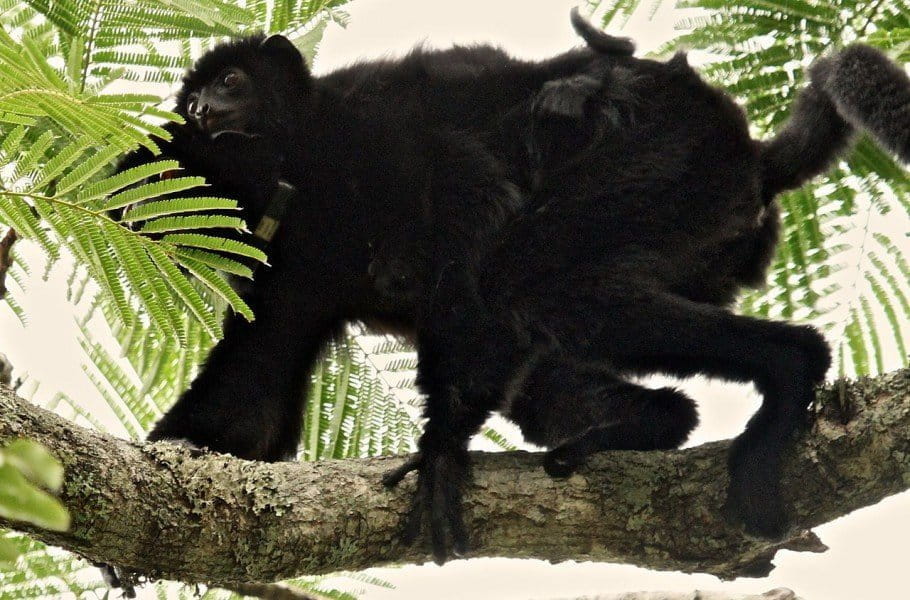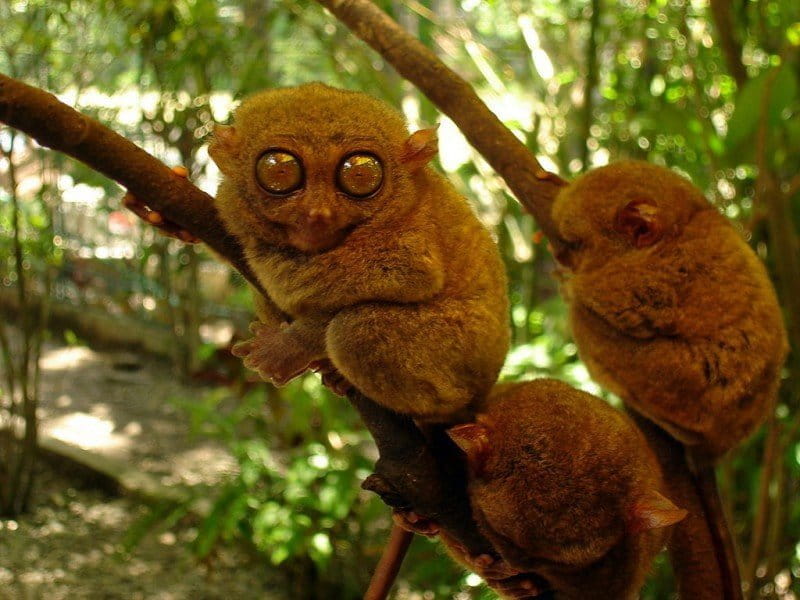- International coalition of 63 primate experts has released latest edition of report that highlights the world’s 25 most endangered primates.
- Four primate species have made it to the list for the first time.
- Madagascar tops the list with five most endangered species, followed by Indonesia and Vietnam.
[See the 2017 report here.]
Every two years, primate experts compile a report that highlights 25 primates that are in severe crisis. These are the most endangered monkeys, apes and lemurs in the world.
On Tuesday, an international coalition of 63 primate conservation experts — including the Primate Specialist Group of IUCN’s Species Survival Commission (SSC), Bristol Zoological Society, the International Primatological Society (IPS), and Conservation International – released the latest edition of the report “Primates in Peril: The world’s 25 most endangered primates”.
The 25 primates are most threatened by habitat destruction, hunting for food and illegal wildlife trade.
“The purpose of our Top 25 list is to highlight those primates most at risk, to attract the attention of the public, to stimulate national governments to do more, and especially to find the resources to implement desperately needed conservation measures,” Russell Mittermeier, Chair of the IUCN/SSC Primate Specialist Group and Executive Vice Chair of Conservation International, said in a statement. “In particular, we want to encourage governments to commit to desperately needed biodiversity conservation measures.

As in 2012, Madagascar is on top again with five species making it to the list, according to the report. Indonesia and Vietnam are a close second with three species each in the list, followed by Brazil, which has two. One primate species each from Cameroon, China, Colombia, Côte d’Ivoire, the Democratic Republic of Congo, Ecuador, Ghana, India, Kenya, Nigeria, Peru, the Philippines, Sri Lanka, Tanzania and Venezuela have made it to the list.
The list includes species like the Lavasoa Mountains dwarf lemur from Madagascar, a species that was discovered only two years ago. Another species from Madagascar in the list, the northern sportive lemur, has fewer than 50 known individuals in the wild. In fact, four species — including the Lavasoa Mountains dwarf lemur from Madagascar and Chamba sacred langur from India — are new entrants to the list.
While the list highlights the top 25 imperiled primate species, more than half of the world’s primates are currently threatened with extinction, according to the IUCN.
“This report makes scary reading for primatologists and the public alike, and highlights where we as conservationists must focus our attention over the coming years,” Christoph Schwitzer, Director of Conservation at Bristol Zoological Society, said in the statement. “However, it also demonstrates the growing importance of collaboration between the international conservation, research and zoo communities in the protection of species and habitats.”
Simon Stuart, Chair of the IUCN Species Survival Commission, added, “we are currently re-assessing all primates and there is great concern that the situation may be getting even worse for many of these iconic and important species.”
The world’s 25 most endangered primates: 2014-2016, by region
| Madagascar | |
| Lavasoa Mountains dwarf lemur (Cheirogaleus lavasoensis) | Madagascar |
| Lac Alaotra bamboo lemur (Hapalemur alaotrensis) | Madagascar |
| Red ruffed lemur (Varecia rubra) | Madagascar |
| Northern sportive lemur (Lepilemur septentrionalis) | Madagascar |
| Perrier’s sifaka (Propithecus perrieri) | Madagascar |
| Africa | |
| Rondo dwarf galago (Galagoides rondoensis) | Tanzania |
| Roloway monkey (Cercopithecus diana roloway) | Côte d’Ivoire, Ghana |
| Preuss’s red colobus (Piliocolobus preussi) | Cameroon, Nigeria |
| Tana River red colobus (Piliocolobus rufomitratus) | Kenya |
| Grauer’s gorilla (Gorilla beringei graueri) | DRC |
| Asia | |
| Sumatran orangutan (Pongo abelii) | Indonesia (Sumatra) |
| Javan slow loris (Nycticebus javanicus) | Indonesia (Java) |
| Pig-tailed snub-nosed langur (Simias concolor) | Indonesia (Mentawai Is.) |
| Delacour’s langur (Trachypithecus delacouri) | Vietnam |
| Golden-headed or Cat Ba langur (Trachypithecus p. poliocephalus) | Vietnam |
| Tonkin snub-nosed monkey (Rhinopithecus avunculus) | Vietnam |
| Chamba sacred langur (Semnopithecus ajax) | India |
| Western purple-faced langur (Semnopithecus vetulus nestor) | Sri Lanka |
| Hainan gibbon (Nomascus hainanus) | China |
| Philippine tarsier (Carlito syrichta) | Philippines |
| Neotropics | |
| Northern brown howler (Alouatta guariba guariba) | Brazil |
| Ka’apor capuchin (Cebus kaapori) | Brazil |
| San Martín titi monkey (Callicebus oenanthe) | Peru |
| Brown spider monkey (Ateles hybridus) | Colombia, Venezuela |
| Ecuadorian brown-headed spider monkey (Ateles fusciceps fusciceps) | Ecuador |



Citation:
Schwitzer, C., Mittermeier, R.A., Rylands, A.B., Chiozza, F., Williamson, E.A., Wallis, J. and Cotton, A. (eds.). 2015. Primates in Peril: The World’s 25 Most Endangered Primates 2014-2016. IUCN SSC Primate Specialist Group (PSG), International Primatological Society (IPS), Conservation International (CI), and Bristol Zoological Society, Arlington, VA. iv+93pp.